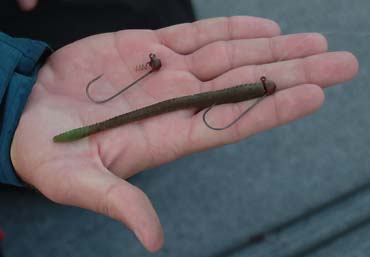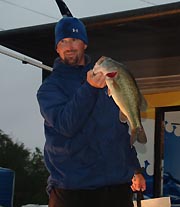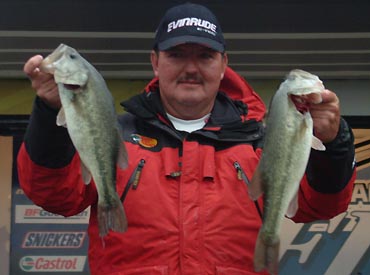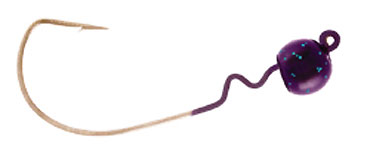Practice for the recent FLW Tour Championship (FLWTC) at Alabama’s Lake Logan Martin left more than a few anglers scratching their heads. The water was dropping – which killed the grass bite – and dreams of a current-driven deep bite never materialized.
Most anglers went into the event with plans to fish a mix of deep and shallow, but as the tournament progressed, docks grew to dominate. Day 3 was the pivotal day. That’s when Anthony Gagliardi’s deeper bite fizzled, and Jay Yelas and Brent Ehrler rose toward the top.
On the final day, it was all Ehrler. He followed up his 13-04, day-3 bag with 15-01 and edged Ray Scheide by 11 ounces. Most surprising was that Ehrler’s plan fell apart the first 2 days, but he used two clues from practice to find the winning fish.
Here’s how the 29-year-old Redlands, Calif. angler won the FLWTC.
Practice
Ehrler arrived at Logan Martin on the weekend before competition, which gave him 3 full days to practice. “I started the first day by throwing a buzzbait in the morning,” he said. “Then, in the afternoon, I was throwing jigs and finesse worms around docks. I was also looking for humps, points and rockpiles. But I wasn’t catching them very good.”
He explored the river for the first few days, then decided to move downlake and launched at Lakeside. That morning, he again went out and threw topwater. Almost instantly, he caught a 12-pound limit, they quit eating the buzzbait, but Brett was catching them real good on a Lucky Craft G-Splash & Gunfish. This was all between 6:00 and 6:30 in the morning.”
What he didn’t realize yet was that he’d found the winning stretch of docks. As he noted, he wasn’t catching them very well off docks, but in two spots, he caught a 2-pound fish that brought chasers to the boat with it. So as practice ended, he had the two areas where he saw chasers, some scattered deep stuff, and his topwater bite. His plan was to start on topwater, probe offshore, then work the docks. As it turned out, his topwater bite would be worthless. He assumed the field would launch at 6:30 a.m., but at the Championship, blast-off’s at 7:00.
Days 1 & 2
> Day 1: 5, 10-12
> Day 2: 5, 9-15 (10, 20-11)
Ehrler faced Cliff Pirch in the first round. He launched and immediately tried his topwater bite, but it was done long before he came off pad.
He went out and started fishing docks, and he caught a 1 1/2- and a 2-pounder from his first stretch of docks – where he saw the chasers – and caught a 2-pounder from his second chaser-area. He didn’t think much of those two areas yet.
Then he ran out to try a deep area, caught another keeper, and returned to the docks. He caught a few more 2-pound fish to cull up to 10 1/2 pounds. He caught his first three fish on a shakey-head rigged with a trick worm, which he fished on braid.
On day 2, he started on topwater but didn’t stick with it long. He quickly switched over to docks, and also tried some deep areas. His 20-11, 2-day total was enough to advance past Pirch by 5-07.
Days 3 & 4
> Day 3: 5, 13-04
> Day 4: 5, 15-01
Weighs were zeroed for day 3 and Ehrler faced Ramie Colson Jr. By this time, Ehrler knew his topwater bite was a bust, so he went immediately to one of his two chase-areas. He caught two 3-pounders close by in that same area, and then caught one 2-pounder offshore – fishing a point.
“Then I ran to my other spot (the second chase-area) and caught two more good ones. I left after that because I didn’t want to beat it up.” Day 3 was the toughest fishing by far – many anglers struggled to catch even 8 pounds – and Ehrler’s 13-04 was the second-best weight that day. He easily dispatched Colson by a 5-10 margin.
By the time the day 3 weigh-in ended, Ehrler knew exactly what he’d do on day 4. He said at the time: “It’s up to the fish at this point. I really don’t think I can make any different decisions tomorrow. I know exactly where I want to go. It’s completely up to them.”
He went right to his best stretch of docks – the chase-area where he caught twin 3-pounders the morning before. “I spent 4 hours there and at 11:00 I came out with three fish,” he said. “I left and came back and caught two more. I caught them all in the same area.” That was it. That single quarter-mile stretch of docks delivered 15 pounds on the final day, which was 11 ounces better than runner-up Ray Scheide’s limit.
Winning Pattern Notes
Here’s what Ehrler said about the winning area. “It was a stretch of docks about a quarter-mile long. It had maybe eight or 10 docks. It was in the mid-lake area of the main lake.
“The area was the inside bend of the river channel,” he added. “The only thing I can guess about why it was so good was there was kind of a point on one side. Maybe they run from the channel up that point and start running the docks. “I really have no clue though. I don’t know why they were pulling up though there.”
 |
Photo: Tru-Tungsten
Ehrler threw a NetBait Finesse worm on two different jigheads – a Tru-Tungsten Ikey Head (shown) |
Winning Gear Notes
Ehrler dumped his trick worm on day 2 and started fishing a Roboworm and NetBait Finesse worm on shakey-heads.
On day 4, he caught all his winning fish on the NetBait worm.
He noted that during practice, Geoff Walker of Mark’s Outdoors – an area retailer – gave him a pack of the worms in a special ‘Bama bug color. The color is exclusive to Mark’s and is a killer on Logan Martin fish.
After the worm started working on day 2, Ehrler had Walker rush him over a supply for days 3 and 4.
He pitched the shakey-head/worm combo under and around docks. In-between docks, he cranked a Lucky Craft RC 1.5.
> Shakey-head gear: 7′ heavy-action prototype Lucky Craft rod, Daiwa TD Sol 3000 spinning reel, 8-pound Sunline fluorocarbon line, 1/8oz Tru-Tungsten Ikey Head Ball Buster Jig and Reaction Innovations Screwed-Up Jig Head (both green-pumpkin), 6″ Roboworm FX Sculpin (green/yellow/pumpkin) and NetBait T-MAC Worm (‘Bama bug).
> Ehrler said the ‘Bama bug color is a dual color. One side is junebug, then it fades into green-pumpkin on the other.
> Crankbait gear: 7′ medium-heavy Lucky Craft cranking rod, Shimano Chronarch reel, 10-pound Sunline fluorocarbon, Lucky Craft RC 1.5 (copper/green shad).
Notable
> Main factor in his success – “I just think that on the second day I started to click and got on something a little more. I had a little more confidence in the areas I had. I finally told myself, ‘Why even try deep?’ I spent time where I thought there was fish – where I saw those chasers.”
> Ehrler never weighed a largemouth all week – only spotted bass.
> Ehrler won the 2004 EverStart (now Stren) Series Championship in his second year in that Series. He won this FLWTC in his second year on the Tour.
The rest of the Top 5 – Ray Scheide, Clark Wendlandt, Shinichi Fukae and Jay Yelas – also focused largely on shallow water. What follows is a breakdown of their main patterns.
2nd: Ray Scheide
> Day 1: 5, 15-01
> Day 2: 5, 8-14 (10, 23-15)
> Day 3: 5, 10-15
> Day 4: 5, 14-06
Scheide nearly won the whole darn thing. He weighed a 5-pound-plus fish the final day, and lost one he couldn’t turn, but ultimately fell 11 ounces short. He worked two separate patterns. When the current wasn’t running – which was more often than not – he ran to the backs of creeks and fished structure and cover just off the bank. He noted concrete structures, rockpiles and a few brushpiles held his fish. His primary shallow bait was a Berkley Power Worm, but he also cranked a Lucky Craft RC 1.5.
When the current was moving, he went to the main river and primarily cranked the ledges and drops with a Norman Deep Little N. He also threw a Terminator Football jig and Reaction Innovations Screwed-Up Jig Head out deep.
> Worm gear: 7′ medium-action G. Loomis rod, Shimano Curado casting reel, 16-pound Gamma Edge fluorocarbon line, 4/0 Gamakatsu Superline hook, 1/4-ounce weight (unpegged), 8″ Berkley Power Worm (curlytail, black).
> He cranked the Lucky Craft RC 1.5 on the same reel and line, but used a G. Loomis CBR cranking rod.
> Deep-cranking gear: 7′ G. Loomis CBR Crankbait Rod, same reel, 12-pound Gamma Edge fluorocarbon, Norman Deep Little N (lavender shad).
> Main factor in his success – “Putting myself in the right places at the right time, according to what the current was doing.”
3rd: Clark Wendlandt
> Day 1: 5, 10-13
> Day 2: 5, 8-10 (10, 19-07)
> Day 3: 5, 10-05
> Day 4: 5, 13-09
Wendlandt focused on docks, but after a few days refined his pattern to favor floating docks. He left his very best area for day 4 – he never even went near it the first 3 days – but when he pulled in the morning of day 4, he discovered it was also Ray Scheide’s best spot. It still produced 13 1/2 pounds though.
“I really liked the floating docks the best,” he said. “I don’t think very many people were keying on those. “The fish were suspended underneath them and were very difficult to catch. They wouldn’t hit a moving bait, so you had to throw light line on spinning tackle.”
He added: “I was skipping the worm up under the docks and getting my bites either on the initial fall or after they followed it to the bottom.”
> Dock gear: 6’6″ medium-action Falcon LowRider rod, Pflueger Supreme spinning reel, 10-pound Ande line, 1/8oz Giggy Head jighead, 5″ Gambler Icicle worm (green-pumpkin).
> Main factor in his success – “The main factor in me finishing 3rd was saving a spot for the last day – gambling on that and still getting through the brackets.”
4th: Shinichi Fukae
Fukae likewise fished docks, but his had to have a brushpile to the side or right in front. His docks were both in creeks and in the main lake, and he targeted depths from 3 to 13 feet.
> Dock gear: 6’6″ medium-action St. Croix Legend Elite rod, Shimano Stella 3000 Spinning Reel, 8-pound Yo-Zuri fluorocarbon, 3/32-ounce Mayukyu Skip in the Shade jighead, 5″ Yamamoto Kut-Tail worm and Yamamoto Shad Shaped worm (both green-pumpkin).
> He noted the Skip in the Shade is a shakey-head designed by Norio Tanabe.
> Main factor in his success – “Timing. I spent 10 minutes in a place at the most. It was run-and-gun.”
5th: Jay Yelas
> Day 1: 5, 13-01
> Day 2: 5, 13-14 (10, 26-15)
> Day 3: 5, 14-03
> Day 4: 5, 13-02
Yelas caught over 13 pounds each day and weighed more in total than any other competitor. He caught 19 his 20 fish on a Berkley Power Shaky worm. The other came on a jig.
“I was fishing (the worm) a couple of different ways,” he said. “I was fishing it with 10-pound Berkley Vanish fluorocarbon, but sometimes 15-pound, depending on how heavy the cover was.
“I had three rods all rigged with the same worm, but on different (jigheads) – 1/8-, 3/16- and 1/4-ounce. The 1/8oz jighead, with a smaller hook, was from Provider tackle. The other two were homemade with a big, 5/0 hook.”
He noted his primary targets were main-lake docks near main-lake points. “One of the keys also was that they were large docks,” he added. “They’d extend out over a shallow flat that was maybe 3 feet deep, then out over the dropoff that broke to 15 to 17 feet on the outside edge.”
The fish were both deep and shallow along the docks – he caught some up to 20 feet deep on the outside poles. But his biggest fish on day 4 came from where the dock met a retaining wall in about a foot of water.
> Heavy dock gear: 6’6″ heavy-action Team Daiwa TV-S rod, Daiwa Viento casting reel (left-handed), 15-pound Berkley Vanish fluorocarbon, 3/16- and 1/4-ounce homemade jigheads, Berkley Power Shaky worm (green-pumpkin).
> Light dock gear: 6’3″ Team Daiwa Light & Tough rod, Daiwa TD Sol spinning reel, 10-pound Vanish, 1/8oz Provider jighead, Berkley Power Shaky worm (green-pumpkin).
> Main factor in his success – “I think it was that worm. I fished a jig hard for 5 days in practice, but they just did not want the jig this week.”
This was a great tournament, and another breakout event for a young angler. Luke Clausen, Dave Wolak and now Brent Ehrler, all youg guys winning big time tournaments.
Rich
www.richlindgren.com
basstournament.blogspot.com
If you enjoy this Blog, consider making a PayPal donation to help me keep it going. No Donation too small, Thanks!

















